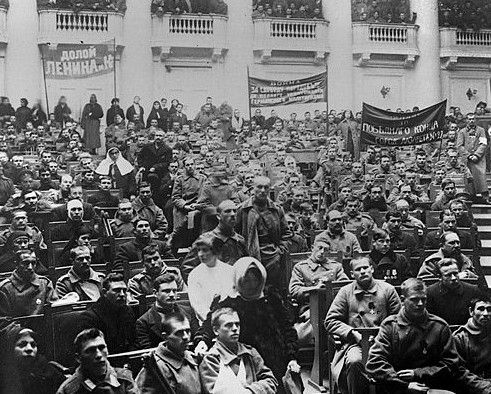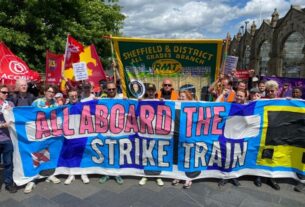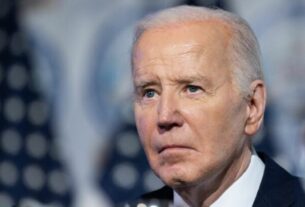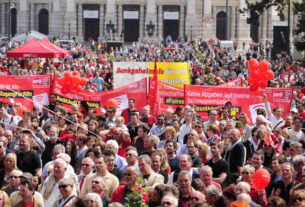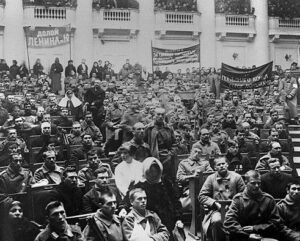
The February revolution in Russia, started by women striking on International Working Women’s Day, quickly pushed aside the Tsar. The main demands were Bread, Peace and Down with the Autocracy (feudal dictatorship).
The next nine months were a living struggle around these slogans. A revolution is not an event; it is a process.
Two Opposing Forces
Two powers emerged out of the February Revolution, the Provisional Government and the Soviets (workers’ councils).
On one side were the capitalist class – willing to continue the war, unwilling to give land to the peasants and opposed to the working class. The Provisional Government, an unelected body that emerged from the rigged Parliament, represented them.
On the other side were the working class with growing support from peasants and soldiers. All longed for peace and food. The peasants wanted an end to working for feudal landowners. The working class wanted an eight-hour day and decent pay. They had made the February Revolution and were represented by the Soviets, made up of elected delegates of workers, soldiers, sailors and peasants.
The poor dared to dream of freedom, of peace, of ending the oppression of the Russian empire and of a rewarding life. The following months were full of revolutionary surges and counter-revolutionary retreats. The masses tested differing political forces seeking to realize the hopes of February. Would they realize their dreams or would the revolutions, like so many others, end in defeat – crushed, hijacked or distorted? The social forces struggled for the society they wanted to emerge from the revolution.
What sort of Revolution?
Russia in 1917 was overwhelming a peasant society. There was a weak capitalist class tied to the feudal landlords and international capitalism, unwilling to lead a revolution to establish capitalist democracy. There was a small but very militant working class gathered in large factories.
The left parties differed on the nature of the revolution. The Social Revolutionaries (SRs), mainly based on the peasants, supported democratic reforms, distribution of feudal lands to peasants, but most supported the war. The Mensheviks, treated Marxism as a dogma, argued that the working class was too small to lead the revolution, so the revolution was to establish a democratic capitalist society with the working class pushing for reforms.
The Bolsheviks argued that the capitalist class were incapable of establishing democratic society. Either the poor, workers and peasants, took power or reaction would return. They were less clear about the balance of forces between the workers and peasants. These theoretical debates became crucial in the furnace of the revolution.
Lenin and Bolsheviks
The Provisional Government made radical noises, but continued the war and refused to break up the feudal estates. Initially the Mensheviks and SRs were the majority in the Soviets, as their ideas seemed an easier road to peace, bread and land. Many Bolshevik leaders were in exile. Those in Petrograd, such as Stalin and Kamenev, adopted passive critical support for the Provisional Government.
Lenin, returning from exile on April 3, challenged this position. He argued for no support for the Provisional government, ending the war, confiscating the large estates, an eight-hour day and all power to the Soviets. Crucially he added that as the Bolsheviks were a minority in the Soviets, they had to patiently explain and allow experience to win workers, soldiers and peasants to their program.
The Bolshevik leaders initially rejected Lenin’s April Thesis, although it corresponded to the views of the members in the workplaces. By the end of April, after a fierce democratic debate, Lenin’s views won majority support, while membership grew rapidly to 79,000.
At the same time the Provisional Government launched a new war offensive – provoking huge anger and a crisis. The Provisional Government needed to increase its left image so invited Menshevik and SR leaders of the Soviets to join, which they did. The experience of so-called socialists in a government that continued the war accelerated the growing support for the Bolsheviks in the Soviets.
Revolution and Counter-Revolution
Meanwhile, the revolution spread across the vastness of the Russian Empire with new Soviets emerging, peasants seizing land and the oppressed nationalities demanding liberty. The Menshevik and SRs leaders in the Provisional Government and Soviets opposed ending the war, an eight-hour day and land seizures.
The revolution in Petrograd was ahead of much of Russia. On June 18, over half a million people, increasingly frustrated with the lack of any real changes, protested, with the Bolshevik slogans prominent.
The masses in Petrograd, sensing the revolution was slipping away, demanded a mass protest in July. Initially the Bolsheviks were reluctant as the mood of the rest of Russia was not so revolutionary and they feared the demonstration would be used to launch repression. However, such was the pressure from the workplaces and garrisons, they supported the mass protest.
The Menshevik and SR leaders supported the repression that left 700 murdered. Reaction spread with the offices and print shop of Bolsheviks destroyed; Trotsky, Kamenev, Lunacharsky and other Bolsheviks imprisoned; and Lenin forced into hiding. However, as repression did not end the war, provide food or give land to the peasants, support for the Bolsheviks grew.
Kerensky, a SR, became the Provisional Government’s Prime Minister but continued the same policies. A capitalist politician wrote, “Chaos in the army, chaos in foreign policy, chaos in industry and chaos in the nationalist questions.”
Kornilov, head of the Russian Army, decided to end this chaos with a coup with support from the capitalists, landowners and the British military. At the end of August, he directed troops to conquer Petrograd.
The Kerensky government was paralyzed. The Bolsheviks, although semi-illegal, were not paralyzed and organized the defence of Petrograd and the revolution. Workers erected barricades to defend the city, the sailors and soldiers of Petrograd organized military defence and the railway workers sent Kornilov’s trains onto sidings. Bolsheviks went among Kornilov’s troops and persuaded them to munity.
Kornilov’s defeat was due to the Bolsheviks. All the slanders of the past months fell away and the reality of who defended the revolution and stood for Peace, Bread and Land was apparent to millions. The patient explaining and experience produced an explosion of support for the Bolsheviks across Russia.

